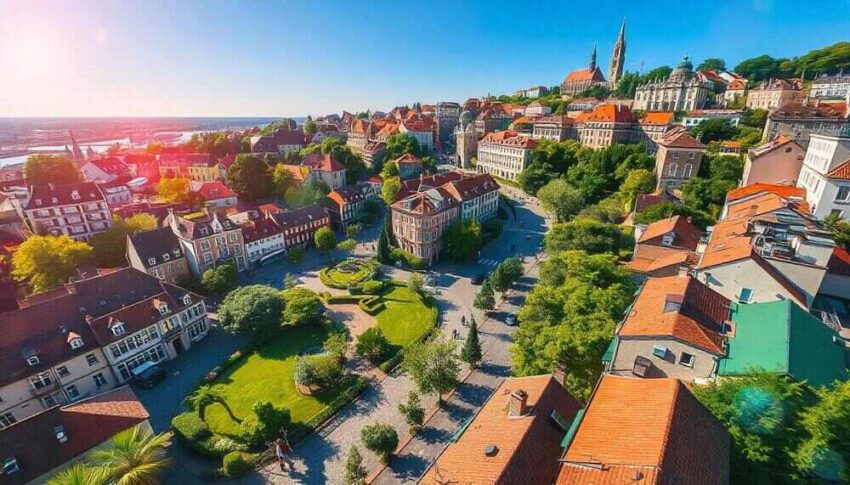Travel
International travellers to Europe prioritise safety and quality this summer

Enthusiasm for travel is rising in key international markets, with 59% of respondents interested in overseas trips for summer 2024 — a notable 9% increase compared to 2019. Europe’s appeal is gradually picking up, albeit at a slower pace, due to security and affordability concerns. Nevertheless, Europe remains a top destination choice, with 41% of surveyed individuals planning to visit this summer, down 4% from 2019 levels.
This is according to the latest Long-Haul Travel Barometer (LHTB) 2/2024 published today by the European Travel Commission (ETC) and Eurail BV. Targeting 7000 travellers from seven major overseas markets – Australia, Brazil, Canada, China, Japan, South Korea, and the US – this study analyses travel sentiment to Europe for the summer months, from May to August 2024.
Findings from the key markets include:
- China and Brazil demonstrate the strongest intention to visit Europe this summer, with 62% and 52% of travellers planning a trip. In both countries, this number is largely driven by more affluent individuals.
- Travellers from the US and Canada exhibit a more cautious approach to European travel, with interest growing slightly since last year to 40% and 42% respectively.
- Australia and South Korea show moderate enthusiasm, as interest sits at 37% and 35% respectively.
- Japan shows more limited interest at 19%, as travel recovery from this market continues to be slow.
- Across all markets, younger travellers (ages 18-24 and 34-49) and those with higher incomes show the strongest preference for European trips.
Commenting following the publication of the LHTB 2/2024, ETC President Miguel Sanz, said: “The positive trends we are recording in travel behaviour are a win-win for travellers and destinations. We are seeing an increased interest in longer stays, allowing tourists to develop a deeper connection with the local culture and support the businesses that make each destination unique. In addition, the openness to off-season travel presents a golden opportunity to spread tourism more evenly throughout the year. This can help reduce peak periods’ social and environmental strain and better support destinations’ visitor economy.”
Affordability takes a back seat in travel priorities
Safety has emerged as the top criterion for long-haul travellers when choosing a destination in Europe this summer. Nearly half (45%) of respondents prioritise European destinations perceived as secure, marking a 9% increase compared to summer 2022 and 6% since summer 2023. Quality tourism infrastructure places second (38%), followed by a 7% resurgence in the appeal of iconic landmarks, from 29% in summer 2023 to 36% in summer 2024.
Included in the survey for the first time, ‘stable weather conditions’ is the top factor for 31% of respondents. Convenience also plays a notable role, with 20% of travellers opting for destinations which can be reached by a direct flight and 20% preferring a destination with good train connections to other places of interest.
While affordability remains a consideration for 23% of respondents, it has decreased from 32% last year. This shift indicates that travellers are increasingly focusing on quality and safety, valuing a smooth travel experience over strict budget limitations.
Travellers opting for multi-country trips as interest in longer holidays grows
67% of long-haul travellers to Europe are opting for multi-country itineraries. For international travel within Europe, full-service airlines remain the preferred choice for 51% of respondents. Train passes emerge as the second most popular option (30%) due to their flexibility and cost-effectiveness in navigating multiple destinations. Low-cost airlines (29%) and single/return train tickets (24%) are also popular among budget-conscious travellers.
Conversely, 21% of respondents reported planning an in-depth visit of a single European country. For these domestic trips, single/return train tickets are the most popular choice (32%), offering a convenient and efficient way to travel between cities over short to medium distances. Travellers seeking more freedom and flexibility are instead opting for car rentals (29%).
Overall, travellers demonstrate a shift in priorities, with a growing desire for more immersive travel experiences. Despite the increasing popularity of mid-range daily budgets (€100-€200) since 2019 (+8%), there is also a greater interest in extended holidays. While one-to-two-week trips remain the most popular choice (57%), getaways exceeding two weeks have risen from 13% in 2019 to 21% in 2024.
Travellers split between responsible behaviours and prioritising familiarity
For the first time, the survey also delved deeper into traveller flexibility to explore certain travel behaviours associated with increased social and environmental sustainability. Notably, 53% of respondents reported being open to travelling to Europe during off-peak periods, attracted by potential cost savings and the opportunity to experience iconic attractions more intimately.
However, when it comes to choosing specific destinations and experiences, travellers often prioritise familiarity. 61% of respondents gravitate towards destinations with well-developed infrastructure and renowned attractions. While the allure of popular spots remains strong, 39% show interest in exploring lesser-known locations across Europe.
A similar preference for either new experiences or familiarity can be seen in how travellers interact with tourism businesses. Half of the respondents want to support local suppliers, while the remaining half prefer familiar accommodations, dining and shopping brands.










